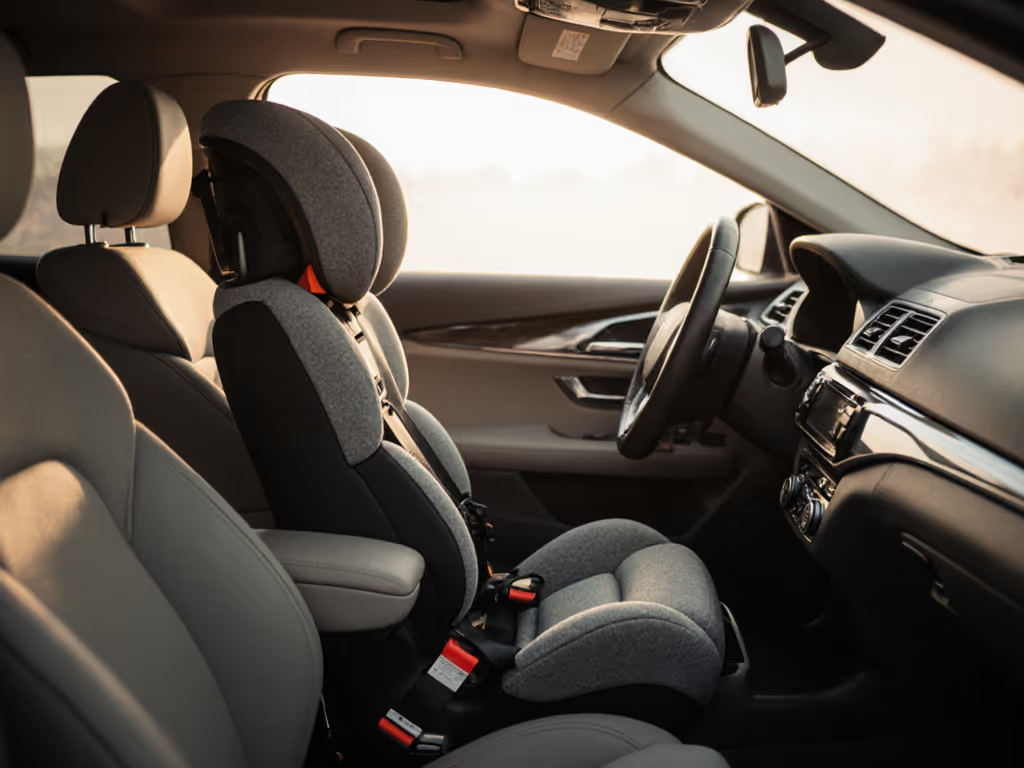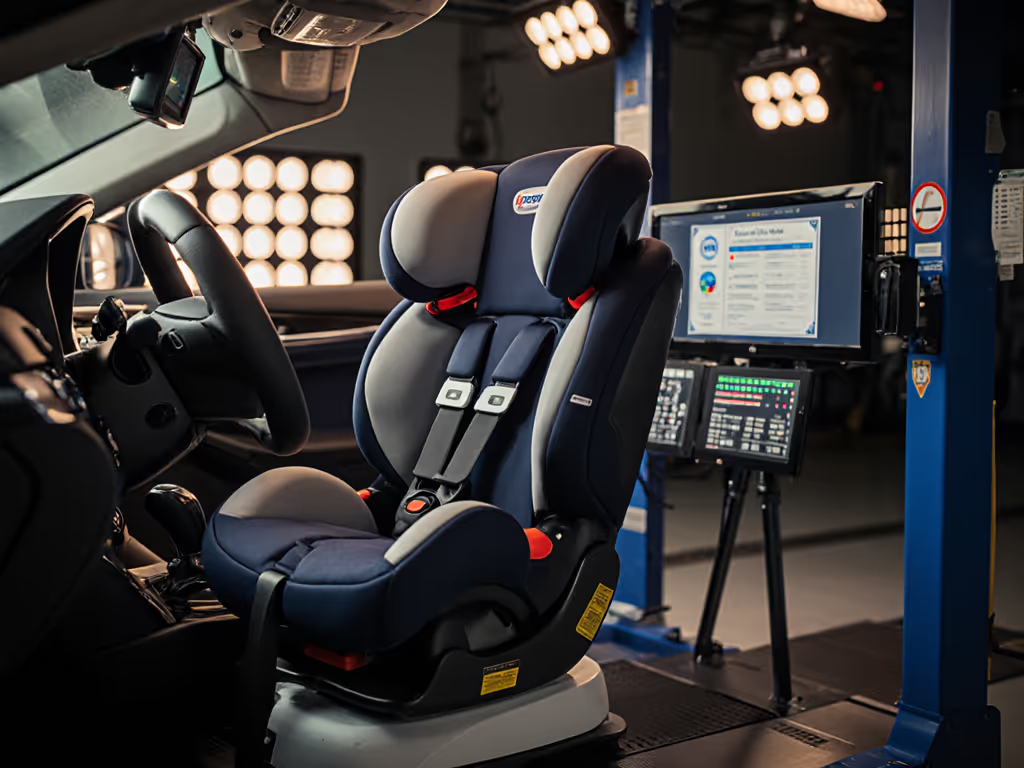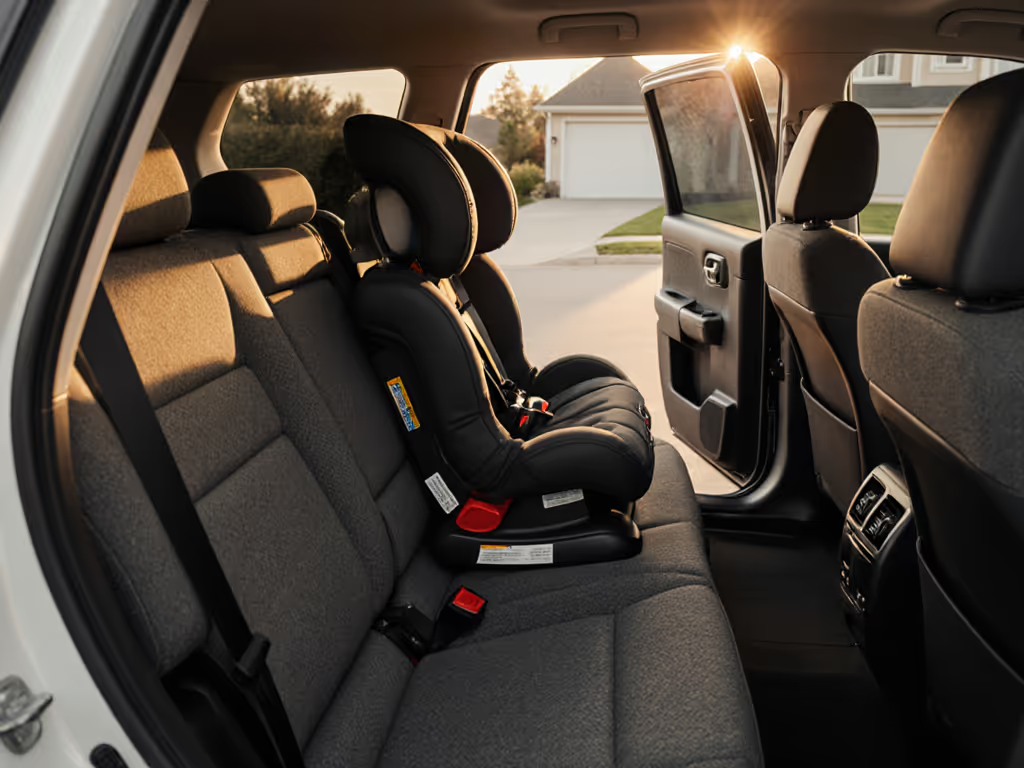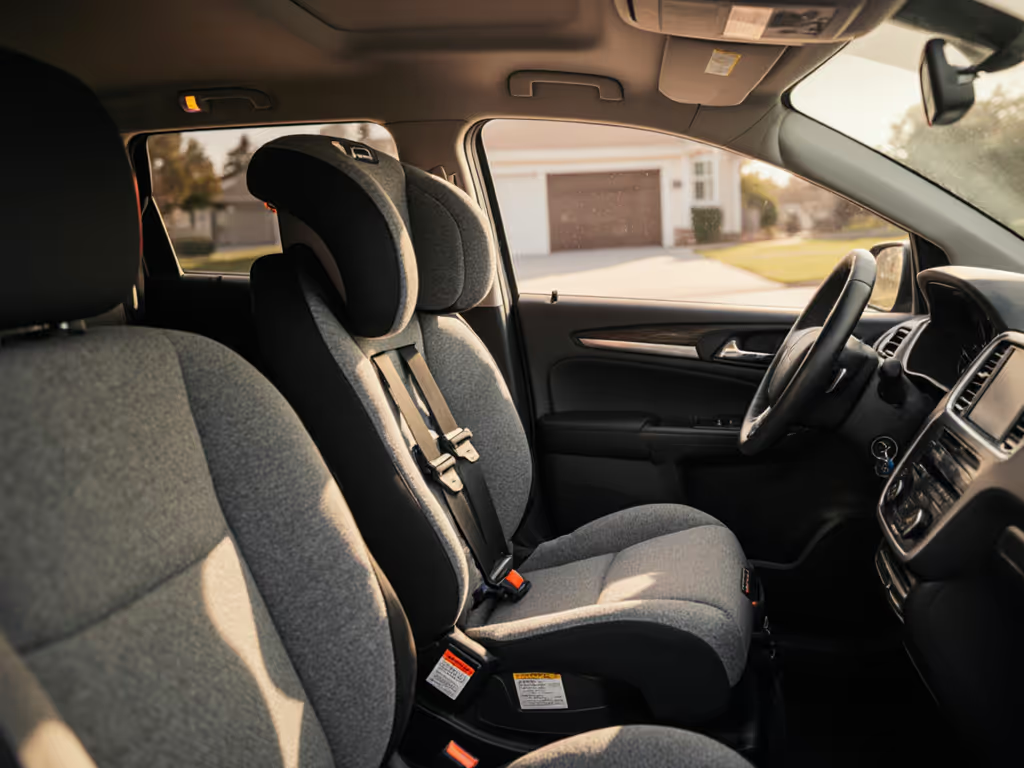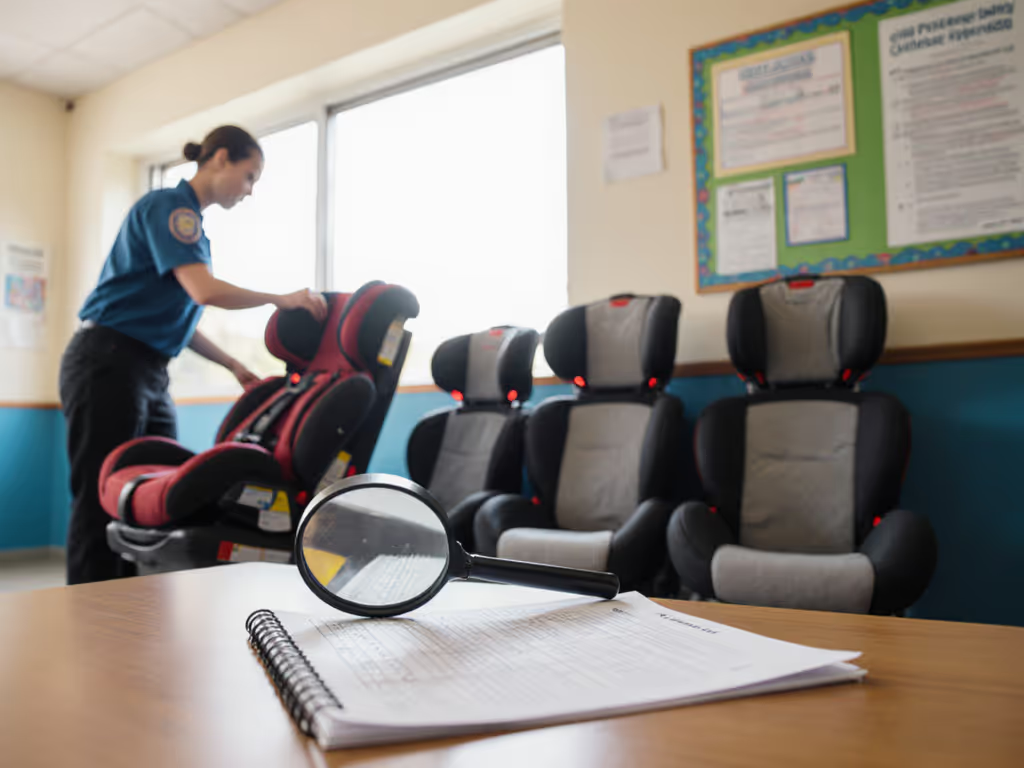
Car Seat Safety Trends 2025: Complete Guide

Did you know that correct use of child safety seats can cut child passenger deaths by up to 70 percent? This powerful fact has captured the attention of parents and lawmakers, driving rapid advances in car seat technology and safety rules worldwide. As 2025 approaches, families will encounter smarter, safer, and more adaptable child car seats than ever, along with stricter regulations and guidance designed to keep every journey as secure as possible.
Key Takeaways
| Point | Details |
|---|---|
| Emerging Technologies | Car seats in 2025 will feature advanced safety mechanisms, smart sensor integration, and lightweight materials for enhanced protection and adaptability. |
| Regulatory Changes | Stricter safety regulations will mandate improvements such as rear-seat reminder systems to enhance child passenger safety significantly. |
| Installation Best Practices | Proper car seat installation is crucial; parents must utilize standardized systems, verify compatibility, and perform regular safety checks. |
| Parental Compliance Responsibilities | Parents are now legally obliged to ensure correct car seat usage, including maintenance and updates on safety standards, to maximize child safety during travel. |
Defining Car Seat Safety Trends 2025
The landscape of child passenger safety is rapidly transforming, with 2025 positioned as a pivotal year for technological innovation and regulatory advancement in car seat design. As the global child safety seats market surges towards a projected USD 6,925.3 million by 2035, parents and caregivers can expect significant improvements in protection, comfort, and smart technology integration.
Key trends driving this market evolution include increasingly sophisticated safety mechanisms that go beyond traditional restraint systems. Manufacturers are investing heavily in research that combines advanced materials, sensor technologies, and ergonomic design to create car seats that adapt to a child's changing physical needs. These innovations aim to address critical safety challenges while providing unprecedented levels of protection during transit.
The market transformation is not just about technology, but also about responding to complex demographic shifts. With global birth rates declining and populations aging, car seat manufacturers are developing more versatile, long-lasting products that offer exceptional value and adaptability. This means seats that can accommodate children across wider age ranges, with modular designs that grow alongside your child and provide consistent protection through multiple developmental stages.
- Enhanced impact protection systems
- Smart sensor integration for real-time safety monitoring
- Lightweight, sustainable materials
- Adaptive sizing mechanisms
- Improved side-impact protection zones
Parents navigating this evolving market should focus on seats that blend cutting-edge safety features with practical, user-friendly design.
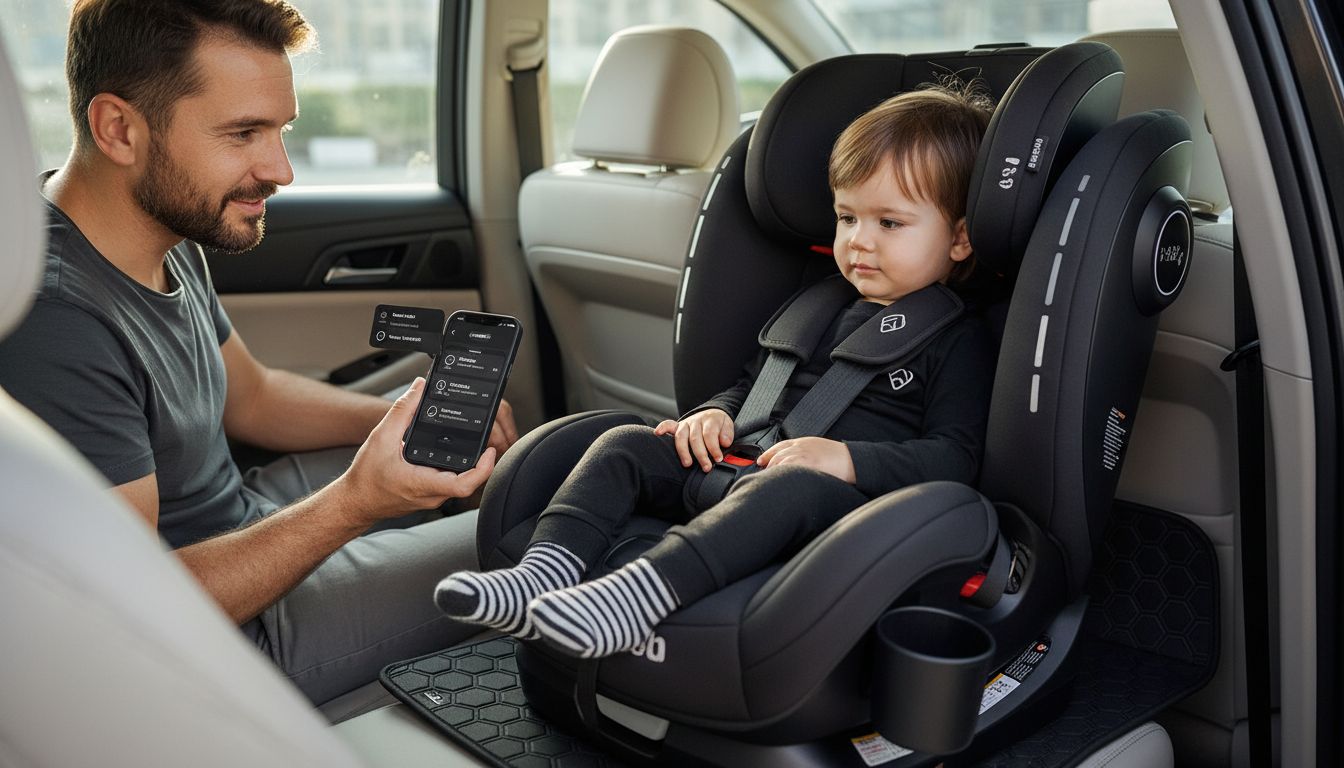 The future of car seat safety is not just about protection—it's about creating comprehensive, intelligent systems that prioritize a child's complete well-being during every journey.
The future of car seat safety is not just about protection—it's about creating comprehensive, intelligent systems that prioritize a child's complete well-being during every journey.
Here's a comparison of key 2025 car seat innovations and traditional models:
| Feature | Traditional Car Seats | 2025 Innovative Car Seats |
|---|---|---|
| Safety Mechanisms | Standard restraints | Advanced impact zones<br>Smart sensors |
| Comfort & Ergonomics | Basic padding | Adaptive sizing<br>Ergonomic design |
| Material Technology | Standard plastics | Lightweight<br>Sustainable materials |
| Technology Integration | None or minimal | Real-time monitoring<br>App connectivity |
| Installation Support | Manual install guides | Digital verification<br>Color indicators |
| Growth Adaptability | Fixed age/size | Modular<br>Grows with child |
Latest Innovations in Car Seat Technology
Smart technology is revolutionizing child passenger safety, transforming traditional car seats into intelligent guardians that do far more than simply restrain a child. Recent innovations like the Babyark convertible car seat demonstrate the cutting-edge potential of modern safety design, integrating 14 advanced sensors with military-grade carbon fiber construction to create an unprecedented level of protection and monitoring.
Emergent research is exploring groundbreaking approaches that extend beyond physical design, including sophisticated reinforcement learning algorithms that can personalize driving behaviors. These emerging technologies aim to create holistic safety ecosystems that not only protect children during transit but also optimize their comfort and physiological well-being. By synergizing wearable sensing technologies with vehicle data, researchers are developing systems capable of adapting driving patterns to enhance infant sleep quality and reduce travel-related stress.
The most compelling car seat innovations now focus on creating multifunctional, adaptive systems that grow alongside children. This means developing seats with modular designs that can be easily reconfigured, integrated smart sensors for real-time safety monitoring, and materials that provide superior impact protection while remaining lightweight and comfortable.
- Integrated mobile app connectivity
- Real-time installation verification sensors
- Advanced impact absorption materials
- Automated safety alert systems
- Ergonomic design with adjustable configurations
Parents can expect car seat technology to continue evolving from passive restraint systems to active, intelligent safety platforms that provide comprehensive protection and peace of mind.
Global and Regional Safety Regulation Updates
Transportation safety regulations are undergoing significant transformations, with governments worldwide implementing increasingly stringent requirements to protect passengers, especially children. In the United States, a landmark regulatory shift is set to take effect in late 2027, mandating rear seat reminder systems in all new cars and trucks to dramatically improve seat belt usage and reduce traffic-related injuries.
The proposed U.S. Transportation Department regulations represent a critical step in comprehensive passenger protection. Starting September 2027, new passenger vehicles will be required to have advanced alarm systems that sound if rear-seat passengers do not fasten their seat belts. These regulations are projected to save approximately 50 lives and prevent 500 injuries annually, highlighting the profound impact of proactive safety interventions.
Beyond the United States, global regulatory bodies are also recalibrating safety standards to address emerging technological capabilities and evolving transportation landscapes. This includes more comprehensive crash testing protocols, enhanced child restraint system requirements, and integrated monitoring technologies that provide real-time safety assessments. Manufacturers must now demonstrate not just minimal compliance, but demonstrate active innovation in passenger protection strategies.
- Mandatory rear-seat belt reminder systems
- Enhanced crash testing standards
- Integration of smart monitoring technologies
- Stricter child restraint system certifications
- Advanced vehicle safety feature requirements
As regulations continue to evolve, parents and caregivers can expect a future where vehicle safety is proactively designed, with sophisticated systems that anticipate and prevent potential risks before they become critical incidents.
Best Practices for Car Seat Installation in 2025
Navigating car seat installation has become increasingly sophisticated, with technological advancements and standardized systems like Isofix transforming how parents secure their children's safety. This international anchoring standard provides a consistent, reliable method for attaching child safety seats in passenger vehicles, dramatically reducing the margin for human error during installation.
Research underscores the critical importance of proper installation. Studies have demonstrated that correct use of child safety seats can reduce child passenger mortality rates by up to 70% and serious injuries by 67%. This means that understanding and meticulously following installation guidelines isn't just a recommendation—it's a life-saving practice. Modern car seats now incorporate intuitive design features and smart indicators to help parents achieve optimal positioning, including color-coded connectors, built-in level indicators, and digital installation guides.
In 2025, best practices for car seat installation extend beyond simply following manufacturer instructions. Parents should prioritize a comprehensive approach that includes regular inspections, understanding vehicle-specific compatibility, and staying updated on the latest safety technologies. This means checking seat fit every few months, verifying that harness straps are correctly adjusted, and ensuring the seat moves no more than one inch in any direction once installed.
- Utilize Isofix standardized attachment points
- Verify seat compatibility with specific vehicle models
- Conduct monthly installation and harness fit checks
- Use digital installation guides and verification tools
- Attend professional car seat installation workshops
Remember, a properly installed car seat is your child's first line of defense on the road. Take your time, double-check every connection, and don't hesitate to seek professional guidance if you're uncertain.
Key Compliance Responsibilities for Parents and Caregivers
In 2025, parental responsibility for child passenger safety has evolved from simple recommendation to a critical legal and ethical obligation. The National Highway Traffic Safety Administration (NHTSA) has implemented stringent regulations that place unprecedented emphasis on parents and caregivers as primary guardians of child safety during transportation. These updated guidelines require not just purchasing a car seat, but actively ensuring its proper installation, consistent maintenance, and age-appropriate usage.
Compliance goes far beyond basic installation. Research consistently demonstrates that correct car seat usage can reduce child passenger mortality rates by up to 70% and serious injuries by 67%, transforming these responsibilities from optional recommendations to life-saving protocols. Parents must now be proactive in understanding specific safety requirements, which include regular seat inspections, understanding weight and height limitations, and staying informed about the latest technological safety advancements.
The most critical compliance responsibilities include maintaining updated knowledge about car seat standards, conducting frequent safety checks, and adapting to your child's changing physical development. This means systematically verifying harness fit, checking for any wear or damage, registering car seats for recall notifications, and understanding the nuanced differences between rear-facing, forward-facing, and booster seat requirements as your child grows.
- Conduct monthly car seat safety inspections
- Stay informed about manufacturer recall notices
- Understand age and size-specific seat requirements
- Attend professional car seat safety workshops
- Maintain detailed documentation of seat history
Remember, your vigilance is the most powerful safety feature. Treat car seat compliance as a continuous learning process, not a one-time checklist.
Comparing 2025 Car Seat Options and Pitfalls
The car seat market in 2025 presents parents with an increasingly complex landscape of choices, with convertible seats emerging as a dominant segment, representing 34% of the global market and offering unprecedented versatility. These seats provide a smart solution for parents seeking long-term value, designed to adapt to a child's growth from infancy through early childhood, potentially spanning multiple developmental stages with a single investment.
Market data reveals a strong preference for rear-facing seats, which currently hold 47% of the global market share and are scientifically proven to provide superior head, neck, and spine protection during frontal collisions. Parents must navigate this landscape carefully, understanding that the cheapest or most visually appealing option isn't always the safest. Critical factors like impact absorption, material quality, ease of installation, and compatibility with specific vehicle models become paramount in making an informed decision.
Navigating potential pitfalls requires a comprehensive approach to seat selection. Common mistakes include purchasing seats based solely on price, failing to verify vehicle compatibility, overlooking weight and height restrictions, and not staying updated on the latest safety certifications. Parents should prioritize seats with advanced safety features like integrated sensor systems, multiple adjustment points, and robust harness mechanisms that can accommodate a child's changing physical needs.
- Prioritize safety certifications over aesthetic design
- Verify vehicle-specific seat compatibility
- Consider long-term usability and growth potential
- Check weight and height limitation specifications
- Understand installation complexity and requirements
Remember, a car seat is an investment in your child's safety. Take time, research thoroughly, and never compromise on protection.
Stay Ahead with the Best Convertible Car Seats for 2025 Safety Trends
Understanding the rapidly evolving landscape of car seat safety in 2025 can feel overwhelming. With new smart sensor technology, modular designs, and strict regulatory changes on the horizon, the safety of your child depends on more than just picking any seat. The challenge is clear: how do you find a car seat that not only meets today's stringent safety standards but also adapts to your child's growth and your vehicle's unique specifications?
At Fits for Years Seats, we recognize these concerns and provide expert guidance tailored to your family's needs. Our in-depth reviews and comparison guides help you navigate crucial factors like installation ease, compliance with updated regulations, ergonomic comfort, and long-term usability. By exploring our resources, you can confidently select a convertible car seat that offers advanced protection, smart installation features, and adaptability for years of safe travel.
Explore our comprehensive car seat buying guides to discover smart choices backed by research. Don't wait until regulatory changes take effect or your child outgrows an outdated seat. Visit Fits for Years Seats now and invest in peace of mind for every journey ahead.
Frequently Asked Questions
What are the key safety trends for car seats in 2025?
The key trends include enhanced impact protection systems, smart sensor integration for real-time safety monitoring, lightweight sustainable materials, adaptive sizing mechanisms, and improved side-impact protection zones.
How can I ensure proper installation of my car seat in 2025?
Utilize Isofix standardized attachment points, verify seat compatibility with your vehicle model, conduct monthly installation checks, use digital installation guides, and consider attending professional car seat installation workshops.
What should parents look for when choosing a car seat in 2025?
Parents should prioritize safety certifications, check for advanced safety features like integrated sensors, ensure compatibility with their vehicle, consider long-term usability, and verify weight and height limitation specifications.
How can I maintain compliance with car seat regulations in 2025?
Parents should conduct monthly car seat safety inspections, stay updated on manufacturer recall notices, understand age and size-specific seat requirements, attend safety workshops, and maintain detailed documentation of the car seat's history.

